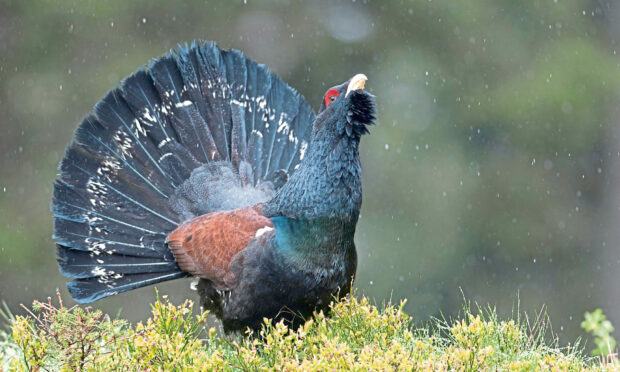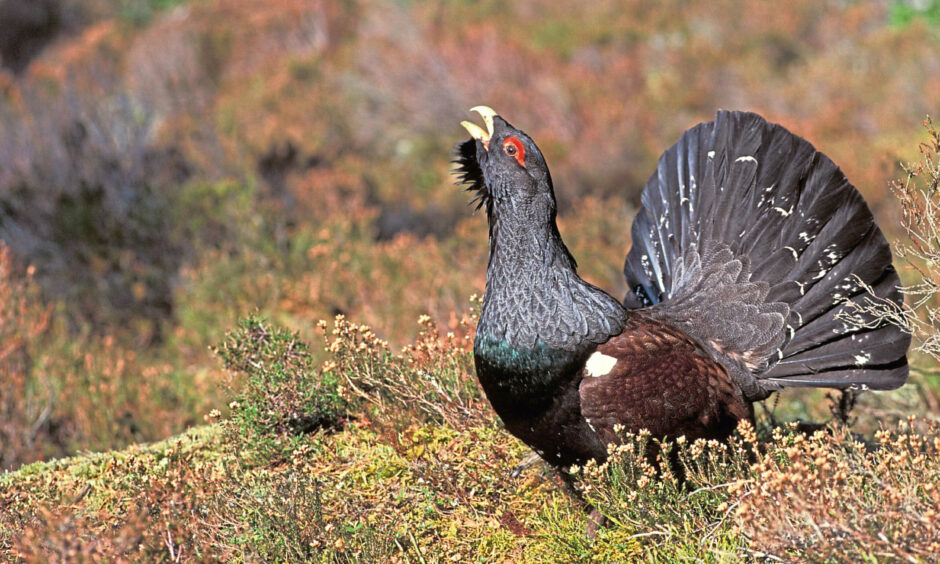The best guess of people who count these things and turn them into reports so that they impose themselves on the news cycle for 24 hours, is that Britain has lost 38 million birds in the last 50 years.
It is the latest in a series of numbers-led national and international cries for help on behalf of nature. On behalf of Planet Earth.
The trouble is that they come so thick and fast that they lose their impact.
Who remembers the one about a million species of plants and animals facing extinction? That was all of three years ago, and it was a finding published by the United Nations Intergovernmental Science-Policy Platform on Biodiversity and Ecosystem Services (IPBES to its chums).
It said that current global action is insufficient and that “transformative changes” were necessary.
Can you think of a single transformative change either in Scotland, Britain or the world that will effect change for the better on the prospects of those one million doomed species?
Bird population in ‘crisis’
Let’s bring it closer to home and reduce the scope (and the numbers, because without a headline-grabbing number there is no publicity) of the crisis. Can we at least agree that there is a crisis?
The number of capercaillie in Scotland, according to last year’s national survey was an estimated 542 individual birds. The figure was qualified: There was 95% confidence that the actual number lay somewhere between 255 and 832, or to put it another way, we don’t know. What we do know – cue more numbers – is that the estimate is down 50% in the six years since the previous survey of 2016.
All this out there and easy to find if you bother to look. The BBC’s Wild Islands series sounded any number of alarm bells if you could hear them above the grotesquely overblown music soundtrack. It was slick, very expensive, at times beautifully filmed, and it told us nothing new. It changed nothing.
More or less as its last episode aired there was a story for 24 hours that the UK Government could not meet its 2030 targets for nature conservation. Who even knew it had a budget?
Meanwhile, in the Cairngorms National Park (where one board member voiced the ingenious notion that the capercaillie population could be helped by clearing out pine martens), police have just been deployed to protect lekking birds from disturbance by birdwatchers.
If you want a measure of how seriously society is taking the bind in which nature finds itself, those two examples offer a reasonable measure.
‘Two problems’
The irony could not be more potent. The demand to see the birds right now is actually being driven by the fact that there are so few left, and the spectacle of capercaillies doing what capercaillies do is in danger of vanishing from Scotland altogether. Again.
There are two problems.
One is habitat. The extent of habitat for capercaillies (mature pine forest) is too small and too fragmented to sustain even the dwindling population. If the numbers tell us anything at all they tell us that. To fix what is a slow-growing habitat by re-creating it and linking existing pockets will take a hundred years and we don’t have a hundred years, or rather the capercaillies don’t.
The truth is that we have left it much too late for capercaillies.
To one degree or another, the same is true of every native habitat in the land. So the job in hand is to restore, expand and re-create native habitats. It’s labour-intensive (there are many, many jobs in long-term nature conservation) so it would be good for people as well as all of nature’s other species.
The second problem is us. We cannot leave nature alone.”
Jim Crumley
It also means we stop managing between a third and a half of Scotland’s land for people and start managing it for nature, or rather, we allow nature to manage it for nature. How many votes do you think that wins for the Scottish Government? But if we believe biodiversity, in ecosystems that work well, that is the nature of the job.
The second problem is us. We cannot leave nature alone. We think we know better than nature does. We wiped out the top predators long ago and we are afraid to bring them back.
Of the species we have reintroduced, we insist on dictating where they can go and where they cannot. We cull them or we capture them and move them far away. We’re even gathering golden eagles from their stronghold and moving them to the Borders where they have shown no inclination to settle in a hundred years.
Large areas of Scotland which could accommodate rejuvenating wetland and woodland are hamstrung by landowners who think that they are doing Scotland a service by providing space for people with guns to pay dearly for shooting things.
And the Scottish Government, the Scottish conservation establishment and the Scottish landowning establishment agree about one more significant number. The land cries out for wolves but they all think “wolf” is a four-letter word.












Conversation